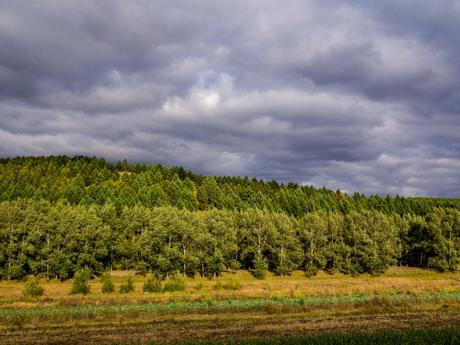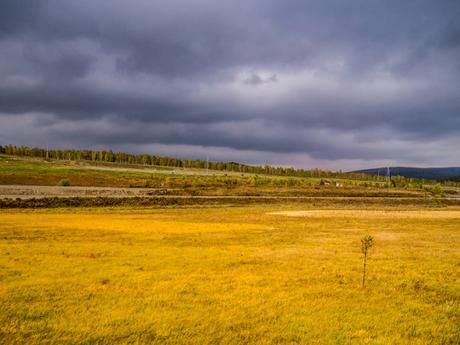What is a Grassland Biome?
As you begin to learn about the Earth and all the life on it, discovering all the different biomes can reveal just how everything fits together like a puzzle of life. A biome is a community of plants and animals that has a specific boundary created by climate and geography. There are all kinds of biomes from aquatic to terrestrial. In this article we are looking at grassland biomes. Grassland biomes are known by several other names.
- Grassland biomes are known as prairies in North America.
- They are called pampas in South America.
- Steppes are grassland biomes in colder regions across Asia and the Northern parts of Russia.
- In Africa, Australia and the southern most parts of South America they are called savannas.

Grassland biomes exist throughout the Earth and are characterized by large, rolling terrains of extensive grasses, flowers and herbs rather than large shrubs or trees expanding across millions of square miles. Grassland biomes receive enough rainfall in a year to support large grasses, and in some areas a few trees. Occasional droughts and seasonal rainfall prevent large forests from growing. While all of these are considered to be grassland biomes, not all grasslands are the same. There are different plants, animals and weather on each. Grassland biomes form an important part of our global ecology and there are more conservation efforts to preserve them underway. By the end of this article you will be able to:
- Identify the two different types of grassland biomes.
- Name the animals that can be found in each.
- Locate the grassland biomes on the map.
- Understand the key differences between the two different types of grasslands.
Learning about grasslands is a part of understanding conservation and our ecological systems. It can help you to under the different arguments supporting climate control too.
Where do you Find Grassland Biomes?
As mentioned earlier, you can find grassland biomes on every continent except for one – Antarctica. There are grassland biomes at the North Pole, they are called steppes. What you need for a grassland to begin is an expanse of land that is between a forest and a desert. This creates a geographical and climate boundary that allows the grasslands to develop. Every desert is surrounded by some form of grassland. The deserts in Asia have the most noticeable ones, even the famous cold desert – the Gobi in China. Here are some facts about their location:
- To be a grassland it has to be bordered by a forest and a desert.
- Over 25% of the landmass on Earth is considered to be a grassland biome.
- There are grasslands on every continent, except for Antarctica – that doesn’t actually have any land, just an ice cap.
Why are Grassland Biomes Important?
Besides serving as a transition between the climates of a desert and forest, grasslands are very important to just about every aspect of life. As they are transitional land areas, the soil is deep and fertile. This makes it ideal for growing crops and for using it as pasture lands for animals. The famous prairies of the Americas are the most recognized pastureland. Sadly, only an estimated 2% of the grassland biome area in North America still exists.
Animals in Grassland Biomes
The animal life on a grassland biome is some of the most striking and fascinating to learn about. Many of the great herds are found on the grasslands – and some very talented independent species too. Here are just some of the animals common to a grassland biome:
- Zebras
- Wolves
- Foxes
- Lions
- Prairie dogs
- Wild horses
- Bison
Many of these species are in danger, but recent conservation efforts have focused on bringing back their numbers. It isn’t that we just want to keep looking at them, but all these animals have an important role to play in the biome.
The 2 Types of Grassland Biomes
There are two different types of grassland biomes. There are tropical grasslands and temperate grasslands. Each of them has a specific climate that allows for an entire different set of animal and plant life to live on it, but they are still both bordered by a forest and a desert while having soil that is ideal for cultivation and pasturing. `
Temperate Grassland Biome
Temperate grasslands don’t just have more pleasant temperatures, they have recognizable seasons. One of them is called the growing season, and the other is the dormant season. A good way to understand this is that there is a summer and spring, plus a fall and winter on temperate grasslands. The average precipitation ranges from 10-35 inches per year. Temperate grasslands can be further subdivided into Prairies and Steppes. Prairies are grasslands with tall grasses while steppes are grasslands with short grasses.
- Prairies are temperate grasslands with distinct seasons, which is why they are home to most of the agricultural activity in the US.
- Animals that live in temperate grassland biomes also go through a cycle of growing and shedding winter fur and layering fat to protect themselves from the cold season.
Human growth and expansion is the greatest threat to temperate grassland biomes and has been the cause of destruction for many of them.

Tropical Grassland Biome
As you can probably guess, tropical grassland biomes have tropical climates – which are warmer than temperate grasslands and have less defined seasons. Tropical grasslands do have rainy seasons, but the temperature is constant. The average precipitation ranges from 25-60 inches per year.
- Tropical grasslands have near constant temperatures.
- They have a rainy season, but that is not the same as a dormant season.
- All tropical grasslands are located in the Southern hemisphere of the world.
- They also tend to feature taller and more robust grass types because of the year round growing season.
Many of the tropical grasslands are under severe threat because their bordering forests are being destroyed. Deforestation doesn’t just destroy a forest, but it upsets the biomes around it.
Conservation efforts have become important
The growth in human population has caused most grassland biomes to become endangered, or to disappear altogether. As mentioned earlier, of all the grasslands that used to be present in the US, there are only 2% left. Cities, suburbs, farming and industry have laid claim to the land for other uses. Now we realize that grassland biomes play an important role in sustaining the climate and ecology. There are more conservation efforts today than ever before. Two of the ways people conserve grasslands are:
- The use of controlled burning to keep grasslands safe. Controlled burning used to occur as a natural part of life – a lightning strike would cause part of the land to burn and allow for new growth. Now, we have to set the fires to burn out old growth. If we don’t do this then great and out of control fires can occur that destroy grasslands rather than help them renew their growth.
- In the US, pioneering conservation programs are rotating land use and replanting indigenous grass to work to restore and maintain grasslands across the nation.
The grassland biome covers over 25% of the Earth’s land mass – or it should. Recent advances in environmental science have begun to explain the role that grasslands play in sustaining all life on Earth. This is why there are more policies being written and implemented to begin conserving the grasslands. With more education on their importance there will be more support of these policies. That will lessen the risk of our losing a part of the world that is not only beautiful to look at, but vital to our survival too.

